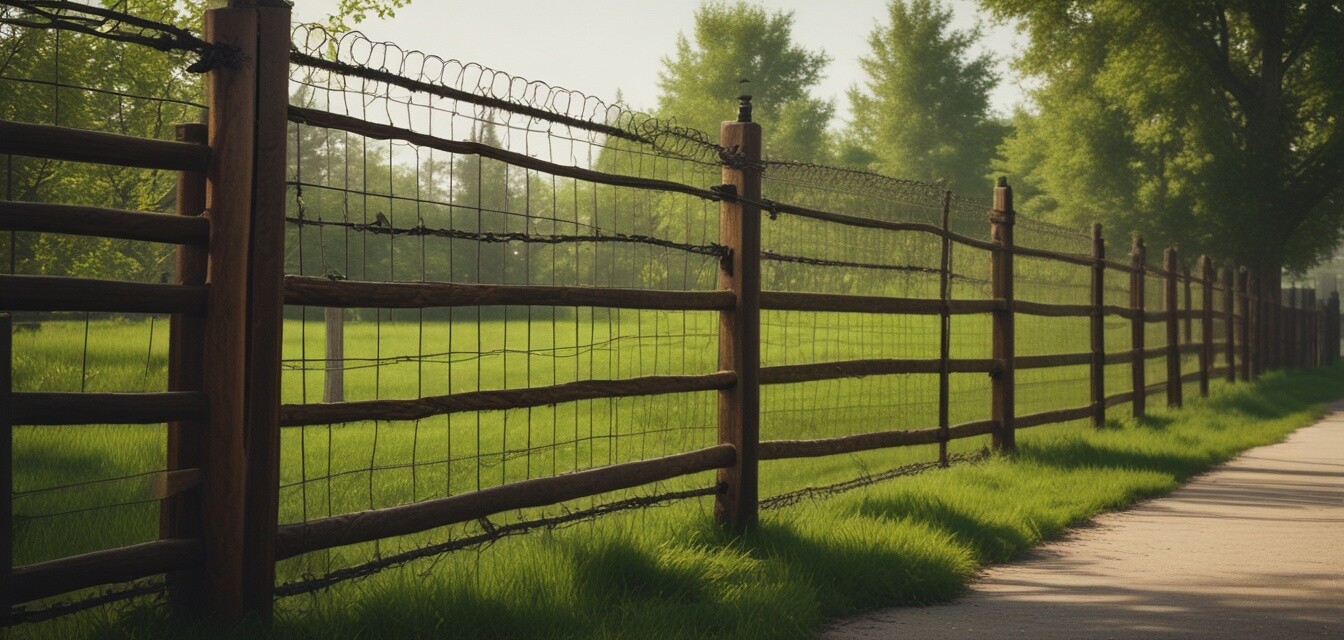
How to improve your fence security
Key Takeaways
- Investing in a strong and tall fence can deter intruders.
- Adding security features such as barbed wire can enhance protection.
- Regular maintenance is crucial for ensuring fence integrity.
- Combining fencing with other security measures can create a layered approach to safety.
- Proper lighting around the fence area is essential for visibility and deterrence.
Ensuring the security of your property is a basic need for homeowners. One significant aspect that comes into play is the fence around your property. A well-structured fence doesn't just enhance curb appeal but can also act as a crucial barrier against potential intruders. Below are several tips and techniques to enhance the security of your property using fencing and barriers.
Understanding the Importance of Fence Security
Fencing serves as the first line of defense against unwanted guests. A strong, well-maintained fence can act as a deterrent, making it harder for intruders to access your property. Moreover, a fence offers privacy and can delineate boundaries clearly. In conclusion, the security of a fence can play a significant role in your overall home security strategy.
Top Features of a Secure Fence
When opting for a fence for security purposes, consider the following features:
| Feature | Description |
|---|---|
| Height | A taller fence (at least 6 feet) makes climbing more difficult. |
| Material | Use sturdy materials like wood, vinyl, or metal for strength. |
| Design | Choose designs that don’t easily allow climbing, such as vertical slats. |
| Barbed Wire | Adding barbed wire at the top can increase security. |
| Locks and Gates | Secure gates with quality locks to prevent unauthorized access. |
Tips to Enhance Your Fence Security
Here are some effective strategies to improve the security provided by your fence:
- Install Motion Sensor Lights: Ensure that your fence is well-lit, especially at night, to discourage potential intruders.
- Maintain Your Fence: Regular inspection and maintenance will ensure the fence remains strong and unbroken.
- Integrate Technology: Consider adding surveillance cameras or sensor alarms to your fencing, providing immediate alerts.
- Keep Vegetation Trimmed: Overgrown bushes near your fence can provide cover for intruders. Keep these areas clear.
- Use Security Signs: Posting signs stating your property is protected can deter intruders.
Comparing Fence Types for Security
It's essential to choose the right type of fence to maximize your property's security. Here's a comparison of popular fence types:
| Fence Type | Security Level | Maintenance Requirements | Cost |
|---|---|---|---|
| Chain Link | Medium | Low | Low |
| Wood Privacy | High | Medium | Medium |
| Vinyl | Medium | Very Low | High |
| Metal (Wrought Iron) | Very High | Medium | High |
Combining Fencing with Other Security Measures
For optimal protection, it’s essential to combine your fencing with other security methods. Here are a few recommendations:
- Surveillance Cameras: Place cameras around the perimeter of your property to monitor any suspicious activity.
- Security Alarms: Installing alarms that are integrated with your fencing can provide swift responses to breaches.
- Plant Effective Landscaping: Use thorny shrubs or spikes along the base of your fence to deter climbing.
- Neighborhood Watch: Join local home security groups to stay informed about local crimes.
Conclusion
Enhancing your fence security is about being proactive. By investing in the right materials, features, and supplementary security measures, you can create a formidable barrier against intruders. Always remember that security is multi-layered; combining techniques will bolster your overall safety. For more home safety tips, check out our Home Safety Tips and Best Practices section.
Pros
- Increased property value with a secure fence.
- Peace of mind knowing your property is protected.
- Deters criminal activity with strong physical barriers.
Cons
- High initial costs for sturdy fencing materials.
- Regular maintenance required to ensure lasting security.
- Potential zoning regulations or neighborhood restrictions.
